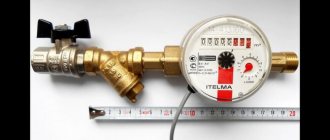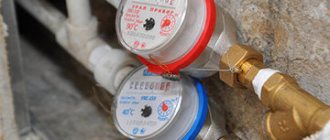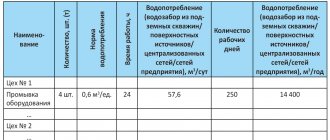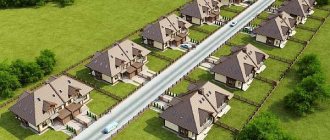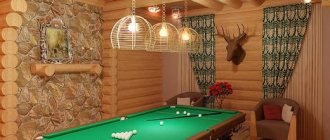When purchasing private housing, it is imperative to delve into the question of what water supply and sanitation should be like according to SNiP, because water consumption is necessary for human household, drinking and communal needs. And the Building Codes and Rules regulate their arrangement.
The water consumption rate is the permissible maximum amount of water of appropriate quality that is necessary to meet the needs of people living in a certain housing. Water consumption standards are determined by building codes and rules adopted by executive authorities.
Dependence of water consumption
The amount of water consumption depends on the level and quality of life of people. Turning to history, we can note that in 1890, one resident of the capital used 11 liters of water every day. After 20 years, the Muscovite already needed 66 liters per day. At the moment, according to SNiP standards, water consumption by Moscow residents has increased greatly and amounts to about 700 liters per day.
Water consumption directly depends on the climate where a person lives and the work he does. Doctors assure us that a person needs to consume up to 2 liters of fluid per day.
Plus, in different climatic conditions, the need for water is different. For example, southern regions require more fluid than northern ones.
Standard hot water per person per month
In order to set hot water standards for a month, the regional government must allocate statistical research. On this basis, both N is assigned - the regional standard for the consumption of cold or hot water supply, and T - that is, the regional tariff. In 2022, the transition to a two-component payment for hot water supply continued.
Saving options
Now the consumer will pay every month not for a cubic meter of hot water already received, but for the cold water consumed and the energy spent on heating it.
Difference in water consumption
Fluctuations in water supply depend on technology and the habits of mankind. As we said earlier, the difference in fluid consumption is related to the climate of a person’s residence, but also to working conditions, or more precisely on weekends. This affects the annual water consumption specified in SNiP. Daily fluctuations vary depending on your daily routine, in general, on sleep and wakefulness. In apartments, water consumption increases in winter due to central heating, compared to private houses or rural areas. Partially, according to SNiP, water consumption per week depends on weekends and is 30%, these are always Saturdays and Sundays.
It has been proven that daily fluctuations in water consumption are associated not only with the time of day, but also with the organization of leisure time for household members, in particular television programs, movies, holidays and other interesting events that take place at home. There is also a huge difference in the consumption of cold and hot water.
On average, a family living in Russia with two children uses about 7,000 liters of hot water and 10,000 liters of cold water.
Differences in calculations for residential and non-residential premises
The rules for the provision of utility services to owners and users of premises in apartment buildings and residential buildings, approved by the RF Government of 05/06/2011 N354 (hereinafter referred to as Rules 354), establish different procedures for calculating fees for utility services for residential and non-residential premises of an apartment building (hereinafter referred to as MKD) in the absence of metering devices. Different procedures are established for calculating the cost of consumed cold water, hot water, waste water, gas and electrical energy. The calculation procedure for residential premises is regulated by paragraph 42 of Rules 354, for non-residential premises - by paragraph 43. The cost of heating for both residential and non-residential premises of MKD is calculated in the same way according to paragraph 42(1) of Rules 354.
If for residential premises not equipped with metering devices, the amount of payment for utility services is determined based on the number of permanently and temporarily residing citizens , then for non-residential premises, paragraphs 2-4 of paragraph 43 establish: “In the absence of an individual metering device, the amount of payment for the utility service provided to a consumer in a non-residential premises, calculated based on the estimated volume of the utility resource . The estimated volume of the communal resource for the billing period is determined on the basis of the data specified in paragraph 59 of these Rules, and in the absence of such data is determined: for cold water supply, hot water supply, gas supply and electricity supply - by a calculation method similar to that defined in the cold water supply contract, hot water supply, electricity supply, gas supply between the contractor and the resource supplying organization in order to calculate the volume of consumption of communal resources in non-residential premises not equipped with individual metering devices, and in the absence of such a condition - by the calculation method established in accordance with the requirements of the legislation of the Russian Federation on water supply, electricity supply and gas supply ."
Daily water consumption standards
Water consumption standards SNiP according to the documentation are used for drinking and domestic needs. This includes cooking, daily hygiene, and much more. And for a private house, we also add washing the vehicle, watering the house area and flower beds, filling the pool, etc. Let's consider the daily water consumption standards of SNiP:
- Cooking – 3 liters;
- Drinking water – up to 2 liters;
- Hand washing (without stopping the water) – up to 8 liters;
- Oral hygiene (without stopping the water) – up to 7 liters;
- Toilet flushing – up to 12 liters at a time;
- Taking a shower – 20 liters/minute;
- Taking a bath – 150 liters;
- Washing – up to 100 liters;
- Washing dishes – up to 10 liters at a time.
In total, we get from 300 to 570 liters per day. From the calculation it is clear that water consumption by SNiP differs significantly from actual indicators. Therefore, it is logical to think about saving water consumption.
Home page/Consumers/Standards
Dear consumers!
Here you can familiarize yourself with the standards for heating and hot water consumption.
At the same time, we draw your attention to the fact that in accordance with the Decree of the Government of the Republic of Bashkortostan dated September 30, 2019 No. 596, when calculating the amount of payment for utility heating services in apartment buildings and residential buildings that are not equipped with collective (common house) heat energy meters, as well as in cases of failure or loss of previously commissioned collective (common house) heat energy metering devices or the expiration of their service life, the utility heating service consumption standards in force as of June 30, 2012 are used, taking into account a coefficient equal to the ratio of the number of months in calendar year to the number of months of the heating period.
In order to ensure a unified approach to calculating the amount of payment for heating utilities during the heating period in apartment buildings and residential buildings that are not equipped with collective (common house) heat energy metering devices, the number of months of the heating period is taken equal to eight calendar months.
Odds = 12/8
Heating standards for the population of Ufa, Republic of Bashkortostan
List of amending documents (as amended by the Resolution of the State Customs Committee of the Republic of Belarus dated December 23, 2011 No. 1560 “On approval of heating standards for the population of the urban district of the city of Ufa of the Republic of Bashkortostan”)
| Group of houses | Heating standard, Gcal per 1 sq. m of total living space per month until August 31, 2019 | Heating standard, Gcal per 1 sq. m of total living space per month, taking into account the coefficient from 01.09.2019 |
| Apartment and residential buildings, as well as apartment-type dormitories with a height of 1 floor | 0,0234 | 0,0351 |
| Apartment buildings, as well as apartment-type dormitories with a height of 2 floors | 0,0234 | 0,0351 |
| Apartment buildings, as well as apartment-type dormitories with a height of 3 floors | 0,0234 | 0,0351 |
| Apartment buildings, as well as apartment-type dormitories with a height of 4 floors | 0,0234 | 0,0351 |
| Apartment buildings, as well as apartment-type dormitories with a height of 5 floors | 0,0197 | 0,02955 |
| Apartment buildings, as well as apartment-type dormitories with a height of 6 floors | 0,0196 | 0,0294 |
| Apartment buildings, as well as apartment-type dormitories with a height of 7 floors | 0,0195 | 0,02925 |
| Apartment buildings, as well as apartment-type dormitories with a height of 8 floors | 0,0194 | 0,0291 |
| Apartment buildings, as well as apartment-type dormitories with a height of 9 floors | 0,0194 | 0,0291 |
| Apartment buildings, as well as apartment-type dormitories with a height of 10 floors | 0,0193 | 0,02895 |
| Apartment buildings, as well as apartment-type dormitories with a height of 11 floors | 0,0192 | 0,0288 |
| Apartment buildings, as well as apartment-type dormitories with a height of 12 floors | 0,0190 | 0,0285 |
| Apartment buildings, as well as apartment-type dormitories with a height of 13 floors | 0,0188 | 0,0282 |
| Apartment buildings, as well as apartment-type dormitories with a height of 14 floors | 0,0186 | 0,0279 |
| Apartment buildings, as well as apartment-type dormitories with a height of 15 floors | 0,0188 | 0,0282 |
| Apartment buildings, as well as apartment-type dormitories with a height of 16 floors | 0,0190 | 0,0285 |
| Apartment buildings, as well as apartment-type dormitories with a height of 17 floors | 0,0190 | 0,0285 |
| Apartment buildings, as well as apartment-type dormitories with a height of 18 floors | 0,0190 | 0,0285 |
| Apartment buildings, as well as apartment-type dormitories with a height of 19 floors | 0,0190 | 0,0285 |
| Apartment buildings, as well as apartment-type dormitories with a height of 20 floors and above | 0,0190 | 0,0285 |
Standards for the consumption of utilities for cold (hot) water supply in residential premises List of amending documents (as amended by the Resolution of the State Committee of the Republic of Belarus on Tariffs dated June 14, 2017 N 89)
| Category of residential premises | Unit | Consumption standards for cold water supply utilities | Hot water utility consumption standard | |
| 1 | 2 | 3 | 4 | 5 |
| 1. | Apartment and residential buildings with centralized cold and hot water supply, sanitation, equipped with toilets, sinks, sinks, 1200 mm long sitting bathtubs with shower | cube meter per month per person | 4,225 | 3,131 |
| 2. | Apartment and residential buildings with centralized cold and hot water supply, sanitation, equipped with toilets, sinks, sinks, bathtubs 1500 - 1550 mm long with shower | cube meter per month per person | 4,270 | 3,186 |
| 3. | Apartment and residential buildings with centralized cold and hot water supply, sanitation, equipped with toilets, sinks, sinks, bathtubs 1650 - 1700 mm long with shower | cube meter per month per person | 4,316 | 3,240 |
| 4. | Apartment and residential buildings with centralized cold and hot water supply, sanitation, equipped with toilets, sinks, sinks, bathtubs without a shower | cube meter per month per person | 3,007 | 1,649 |
| 5. | Apartment and residential buildings with centralized cold and hot water supply, sanitation, equipped with toilets, sinks, sinks, showers | cube meter per month per person | 3,774 | 2,582 |
| 6. | Apartment and residential buildings with centralized cold water supply, water heaters, drainage, equipped with toilets, sinks, sinks, showers and sit-down bathtubs 1200 mm long with shower | cube meter per month per person | 7,356 | X |
| 7. | Apartment and residential buildings with centralized cold water supply, water heaters, drainage, equipped with toilets, sinks, sinks, showers and bathtubs 1500 - 1550 mm long with shower | cube meter per month per person | 7,456 | X |
| 8. | Apartment and residential buildings with centralized cold water supply, water heaters, drainage, equipped with toilets, sinks, sinks, showers and bathtubs 1650 - 1700 mm long with shower | cube meter per month per person | 7,556 | X |
| 9. | Apartment and residential buildings with centralized cold water supply, water heaters, drainage, equipped with toilets, sinks, sinks, showers and bathtubs without a shower | cube meter per month per person | 7,156 | X |
| (as amended by the Resolution of the State Committee of the Republic of Belarus on Tariffs dated June 14, 2017 N 89) | ||||
| 10. | Apartment and residential buildings with centralized cold water supply, water heaters, drainage, equipped with toilets, sinks, sinks, showers | cube meter per month per person | 6,356 | X |
| 11. | Apartment and residential buildings without water heaters with water supply and sewerage, equipped with sinks, sinks and toilets | cube meter per month per person | 3,856 | X |
| 12. | Apartment and residential buildings without water heaters with centralized cold water supply and sanitation, equipped with sinks and sinks | cube meter per month per person | 3,148 | X |
| 13. | Apartment and residential buildings with centralized cold water supply, without centralized drainage, equipped with washbasins, sinks, toilets, bathtubs, showers | cube meter per month per person | 5,016 | X |
| 14. | Apartment and residential buildings with centralized cold water supply, without centralized drainage, equipped with washbasins, sinks, toilets | cube meter per month per person | 1,716 | X |
| 15. | Apartment and residential buildings with a standpipe | cube meter per month per person | 1,008 | X |
| 16. | Houses used as dormitories, equipped with sinks, sinks, toilets, showers with centralized cold and hot water supply, drainage | cube meter per month per person | 3,009 | 1,873 |
Standards for the consumption of utility resources for cold (hot) water supply for the purpose of maintaining common property in an apartment building
List of amending documents (as amended by the Resolution of the State Committee of the Republic of Belarus on Tariffs dated January 23, 2017 N 2)
| Category of residential premises | Unit | Number of storeys | Cold water consumption standard for maintaining common property in an apartment building | Standard for hot water consumption for the maintenance of common property in an apartment building | |
| 1. | Apartment buildings with centralized cold and hot water supply and sanitation | cube meter per month per sq. meter of total area | from 1 to 5 | 0,0393 | 0,0393 |
| from 6 to 9 | 0,0315 | 0,0315 | |||
| from 10 to 16 | 0,0213 | 0,0213 | |||
| more than 16 | 0,0143 | 0,0143 | |||
| 2. | Apartment buildings with centralized cold water supply, water heaters, sanitation | cube meter per month per sq. meter of total area | from 1 to 5 | 0,0358 | X |
| from 6 to 9 | 0,0112 | X | |||
| from 10 to 16 | 0,0023 | X | |||
| more than 16 | X | X | |||
| 3. | Apartment buildings without water heaters with centralized cold water supply and sanitation, equipped with sinks, sinks and toilets | cube meter per month per sq. meter of total area | from 1 to 5 | 0,0227 | X |
| from 6 to 9 | 0,0332 | X | |||
| from 10 to 16 | X | X | |||
| more than 16 | X | X | |||
| 4. | Apartment buildings with centralized cold water supply without centralized drainage | cube meter per month per sq. meter of total area | 0,0063 | X | |
| Note - The total area of the premises that are part of the common property in an apartment building is determined as the total area of the following premises that are not parts of the apartments of the apartment building and are intended to serve more than one room in the apartment building (according to the information specified in the passport of the apartment building): area inter-apartment landings, stairs, corridors, vestibules, halls, lobbies, strollers, security (concierge) premises in this apartment building that do not belong to individual owners | |||||
Resolution of the State Committee of the Republic of Belarus on Tariffs dated September 29, 2016 N 120 (as amended on June 14, 2017) “On approval of utility consumption standards for cold (hot) water supply in residential premises, utility resources for the purpose of maintaining common property in an apartment building, for cold water supply when using a land plot and outbuildings on the territory of the Republic of Bashkortostan, determined by the calculation method" (Registered in the State Justice Committee of the Republic of Belarus on October 4, 2016 N 8227)
Standards for drainage in private houses
Drainage, like water supply, is an essential element of modern comfortable human life.
Living in a private house, the necessary amenities, such as a kitchen and a bathroom, also require the collection of used water, and not just water supply. And the SNiP water disposal for private houses per day per person is given below:
- With water supply and sewerage (without bath) - 120 liters;
- With water supply, sewerage and bathrooms - 225 liters;
- From the center hot water supply – 300 liters;
- From the center hot water supply (structure height more than 12 meters) - 400 liters.
Daily water drainage is uneven within 1 hour, but this difference is usually not taken into account when calculating costs, because water drainage takes into account the minimum and maximum coefficients per day, hours with general unevenness. According to the data, we see that water supply and sanitation SNiP do not even meet the planned indicators. For example, if a person lives in a house with running water, sewerage, and a bathroom and uses 500 liters of water, whereas according to the standards he is required to drain only 225 liters.
Estimated standards have long been exceeded by actual water consumption, so residents of private houses are trying to save money.
With the help of various filtering installations, you can use process water for other needs; of course, you should not drink it, but it is quite suitable for watering and washing your car.
Application of calculation methods
It should be noted that the choice of a specific calculation method for determining the volume of consumption of a communal resource for each specific case must be agreed with the relevant resource supplying organization and the agreements reached must be recorded in the relevant contracts.
The calculation of the amount of payment for a utility service consumed in non-residential premises not equipped with metering devices is calculated as the product of the consumed volume of a utility resource, determined by calculation, by the tariff for the specified utility resource established by the state authority of a constituent entity of the Russian Federation for the corresponding category of consumers.
Author: Nifontov D.Yu.
ku 71pu 5water disposal 30
Did you like the article?
Subscribe to stay updated on current articles and the most important housing and communal services news.

